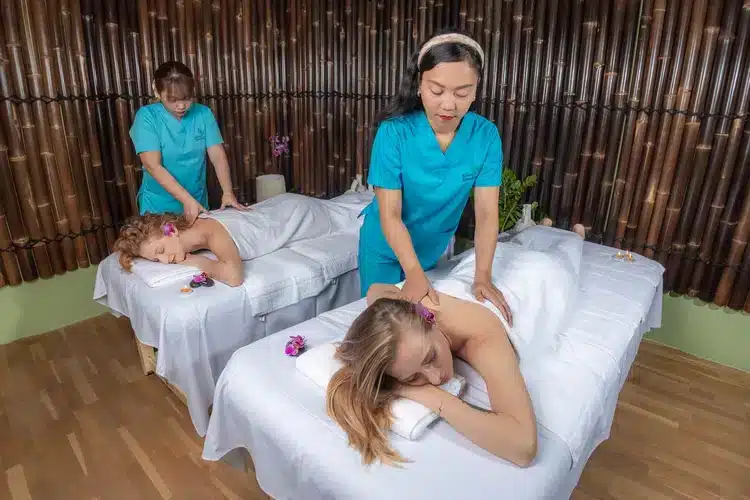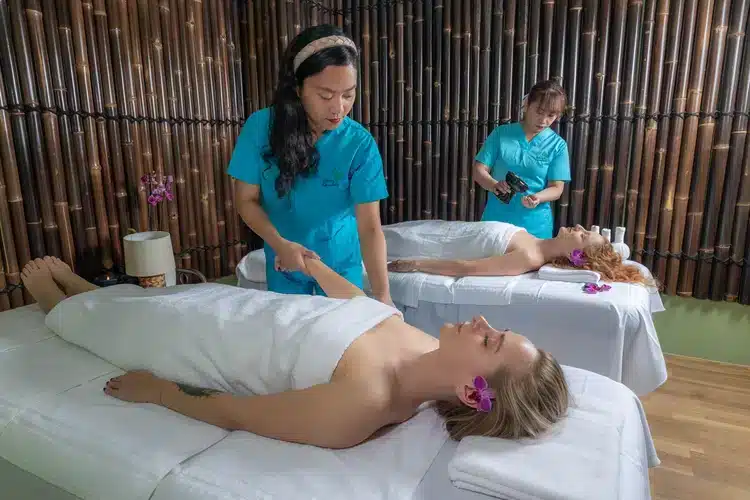What is Filipino massage? Pinoy Hilot and its roots
By Madilene B. Landicho, MA Transcript: Veit Ny
The Pulse of Life: the Story of a Girl, Traditional Childbirth Practices and Filipino Massage by Pinoy Hilot
When I was smaller, I was often awakened by the desperate knocks on the door of fathers calling for my mother, the only midwife in our barangay. I was always fascinated by how quickly my mother got ready, grabbed her bag and ran out with a question: “Have you called Nanay Asyang yet?” “Yes,” I replied. Nanay Asyang was the local Magpapaanak, or hilot, the traditional midwife, who was respected by everyone in our community.
Together they made a perfect team – my mother bringing modern medical knowledge and Nanay Asyang complementing that care with traditional techniques passed down through the generations. It was common for me to join and learn from both of them. It was also in this environment that I first encountered traditional Filipino massage technique called Pinoy Hilot, which was an integral part of the care of pregnant women.
Traditional Midwifery Practices
In our community, pregnancy and childbirth were surrounded by rituals and practices that provided pregnant women with psychological support and a sense of security. One such ritual was the ‘pagbubungkal’, in which Nanay Asyang checked the position of the baby in the womb during the seventh month of pregnancy. Although modern doctors did not recognize this practice, local mothers trusted it completely.
Other practices included wearing “bigkis” (bandage-like wraps) to keep the baby in the correct position. The mother had to avoid lifting heavy loads and stay at home to avoid premature birth. These rituals, although not scientifically proven, were of great importance to pregnant women.
Healing Touch Pinoy Hilot: What is Filipino massage?
One of my greatest joys was learning the Pinoy Hilot technique, which is known in the Western world as traditional Filipino massage. This massage is renowned for its beneficial effects on physical and emotional health. It features a combination of gentle touch, pressure and energy balancing, which brings pain relief, improves circulation and promotes overall relaxation.
During pregnancy, Pinoy Hilot is is particularly beneficial as it helps relieve common ailments such as back, neck and shoulder pain. It relieves tension in the muscles and joints, which can relieve pelvic and hip pain. In addition, it stimulates blood circulation, reduces swelling and promotes better distribution of nutrients and oxygen to the fetus, which is essential for its healthy development.
The Intermingling of Worlds: Modern and Indigenous Practices
In our community, the world of modern medicine and traditional indigenous practices have often intersected. My mother’s modern medical knowledge blended seamlessly with traditional Nanay Asyang techniques to create a holistic approach to caring for the mother and her unborn child. This collaboration offered pregnant women comprehensive support that no other approach could provide. She stressed the importance of respecting and incorporating indigenous wisdom into the current health care framework.
Impact of the Home Birth Ban
In 2008, however, a blow came. The government instituted a policy banning home births, which meant that Nanay Asyang and other hilots could no longer legally provide their services. I was disappointed and concerned because many mothers in our community could not afford expensive hospital births.
Despite the ban, we had no choice but to continue our work in secret. The mothers in our village still relied on us. We knew that our services were not only more affordable, but also provided care that is often lacking in hospitals. I saw women turning to me with confidence and I knew I couldn’t let them down.
A Future Without Hilots?
The policy of banning home births threatens the future of hilot. The young generation is not interested in learning a practice that is now prohibited by law. There are still only three hilots practicing in our community and their numbers are decreasing. But I am increasingly determined to keep this tradition alive, but without support and legal recognition, it is increasingly difficult.
Efforts to Revive Traditional Practices: the Eden’s Garden
Eden’s Garden still tries to preserve and promote traditional practices such as the Pinoy Hilot massage, although these practices are now adapted to the Western world. By providing training and support to new therapists, Eden’s Garden seeks to preserve this cultural heritage and ensure that its beneficial effects remain accessible. Pinoy Hilot is the signature massage at Eden’s Garden and is the foundation of their massage therapies. Eden’s Garden bridges the gap between past and present, honouring the legacy of the hilotes and ensuring that their healing touch endures.
Conclusions and Recommendations
Traditional childbirth practices in Batangas are still significant for their psychological support and cultural value. The policy of banning home births has undermined these practices and highlighted the need for a health system that is unfortunately still unaffordable for many residents.
Reference: Landicho, M. B. (2022). Alaga to Hilot: Unraveling Local Knowledge, Practices, and Experiences on Pregnancy and Childbirth in a Community in Batangas, Philippines. Acta Medica Philippina, 56(16). (Acta Medica Philippina)
The Philippines Has A Policy Against Home Births. It’s Not Playing Well In A Pandemic. The Philippines’ Policy Against Home Births








